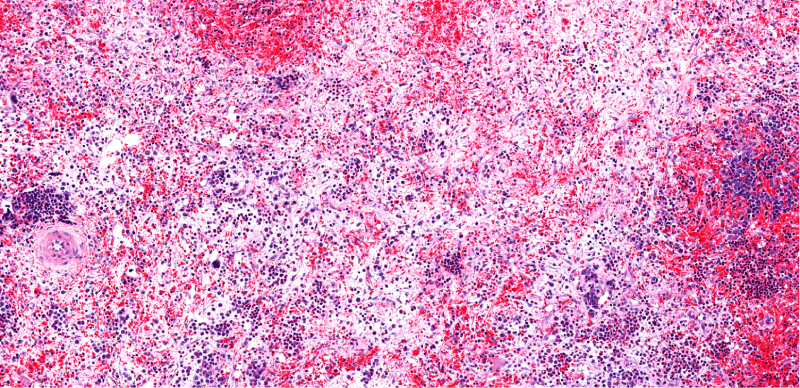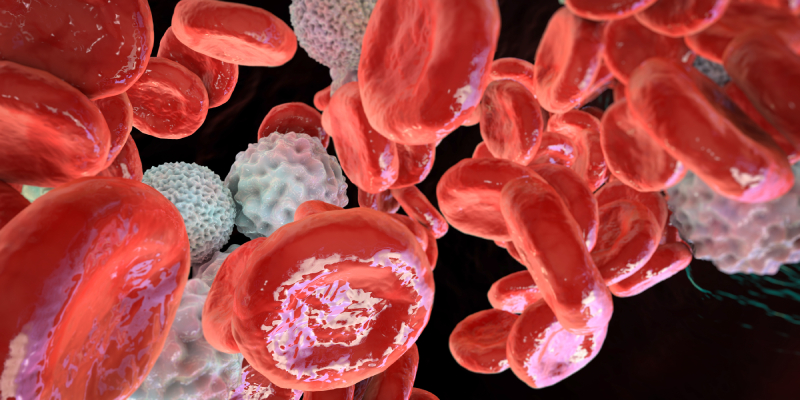
Tasquinimod at 10 or 30 mg/kg/day for eight weeks significantly improved overall survival without toxicity in NSG mice engrafted with patient-derived xenograft (PDX) myeloproliferative neoplasm and acute myeloid leukemia (MPN-AML) cells with CALR and TERT mutations, according to a recent analysis.
Tasquinimod, an orally active, quinoline-3-carboxamide linomide analogue immune-modulatory agent, also reduced myeloproliferation, splenomegaly, and myelofibrosis in JAK2-V617F mice.
Warren Fiskus, BSc, PhD, of the University of Texas MD Anderson Cancer Center in Houston, and colleagues evaluated tasquinimod treatment as a single agent and in combination with ruxolitinib, BET inhibitor OTX015, and pelabresib.
Tasquinimod at 30 mg/kg/day resulted in significantly greater survival compared with ruxolitinib or OTX015, respectively. Meanwhile, co-treatment of tasquinimod at 5-30 µM with ruxolitinib (250-1000 nM), OTX015 (50-250 nM), or pelabresib (100-500 nM) induced synergistic lethality in advanced blastic phase MPN cells exhibiting delta synergy scores >1.0.
In the MPN-AML-infused mice population, tasquinimod bound to A9 and inhibited its interaction with TLR and RAGE receptors. According to researchers, A9 is highly expressed in AML and associated with poor prognosis as it amplifies the inflammatory response through TLR4 and induces inflammatory cytokines such as TNFα and IL-6.
An RNA sequencing analysis showed that exposure to tasquinimod at 20 µM for 16 hours led to negative enrichment of the gene sets of MYC and E2F targets, mTORC1 and IL6-JAK-STAT3 signaling, and inflammatory response in PD MPN-AML cells.
According to CyTOF analysis, while tasquinimod significantly reduced expressions of A8, A9, p-ERK, MPO, CXCR4, Cyclin D1, PU.1, and Ki67, it also increased protein levels of GFI1, p21, and cleaved PARP in phenotypically defined PD, CD34+ MPN-BP cells expressing high levels of CLEC12A, CD99, and CD123 but low levels of CD11b.
“Based on these findings, in present studies, we determined in vitro and in vivo efficacy of [tasquinimod] against cellular models of advanced MPN cell lines and patient-derived (PD) CD34+ blastic phase (BP, > 5% blasts in PB) MPN cells,” the researchers concluded.
Reference
Fiskus W, Masarova L, Mill C, et al. Preclinical studies demonstrating efficacy of tasquinimod in models of advanced myeloproliferative neoplasm (MPN) in blastic phase. Abstract #741. Presented at the 65th ASH Annual Meeting and Exposition; December 9-12, 2023; San Diego, California.






 © 2025 Mashup Media, LLC, a Formedics Property. All Rights Reserved.
© 2025 Mashup Media, LLC, a Formedics Property. All Rights Reserved.